A theatrical exhibition and performance that is held in a public setting without the aid of a paid audience is called street theatre. In India, an evolution from proscenium theatre to street theatre emerged as an approach for liberating the working class and strengthening their revolt against established power. But why on the street?
The origin of street theatre
Street theatre was a major instrument of social and political protest in India during the British colonial era in the late 19th and early 20th centuries, partly due to the impact of European theatre and the emergence of the nationalist movement. To spread liberal ideas and inform the public about the negative effects of imperialism, the Indian People’s Theatre Association (IPTA) organised India’s first street theatre in 1943.
For the first time in Indian history, the Bengal famine sparked such dramatic action. Bijon Bhattacharya, one of the founders of the Indian People’s Theatre Association (IPTA), wrote the first street play with a political message. The drama “Nabanna” which depicted the miserable condition of Bengali peasants, was performed in 1944. It presents an accurate image of Bengali landlords violating their subjugated farmers. Therefore, IPTA was the pioneer theatre company in India to popularise street plays.
A society that was sharply divided by class, caste, and religion was affected by street plays that told stories and addressed topics that were directly relevant to the people, such as food, famine, poetry, communal violence, and feudal and colonial exploitation.
The 1970s saw the resurgence of street theatre, which quickly expanded across the nation. In 1973, Safdar Hashmi founded Jana Natya Manch, also known as Janam, which spearheaded the Indian street theatrical movement. He actively criticized the problems existing in society through this art. Its first of these plays, Machine (1978), is a classic; other examples of popular political theatre that combines artistry and confrontation are Aurat (1979) and Hallabol (1988). When Hashmi was murdered during a performance in 1989, the street theatre suffered an enormous change. In India, April 12, his birthday, is currently commemorated as National Street Theatre Day to honour his contributions to the early days of street theatre and to pay tribute to him.
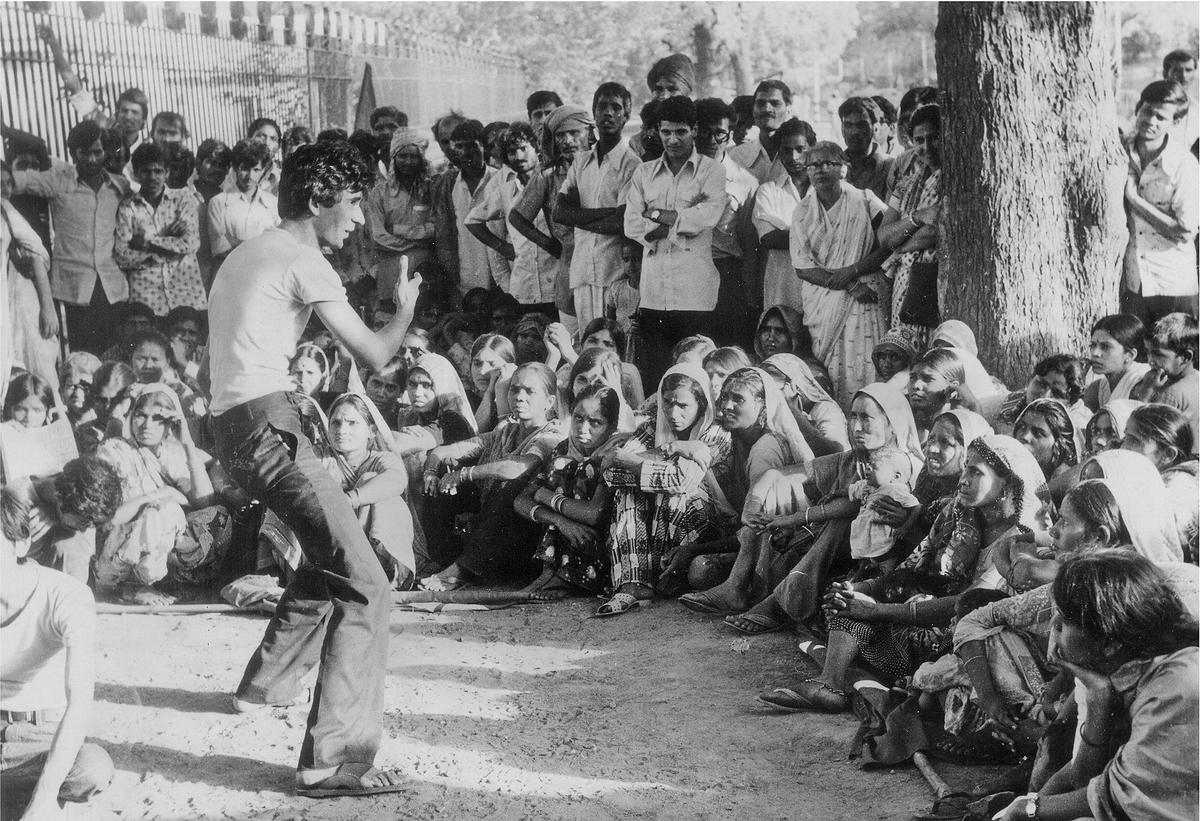
People’s hero Theatre and CPI(M) activist Safdar Hashmi performing in a street play sometime in the late 1970s janam archive
How street theatre is enacted?
Street dramas flourished as a popular form of entertainment and social criticism in India frequently held in public areas like college or university campuses, railway stations, slums street corners and marketplaces. The artists do not have to wait for people to enter the theatre, and unlike traditional theatres, there is no ticket queue for attendees of street plays.
Teachers and students dedicated to bringing social change make up the majority of street theatre performers who receive neither financial aid nor public recognition. A “dholak,” or choral song, is performed to draw in spectators. The play is typically held in a circular space with seats all around once a sizable group has assembled. The script is spoken or sung by the chorus. Occasionally, the actors mime while one person narrates without a mike.
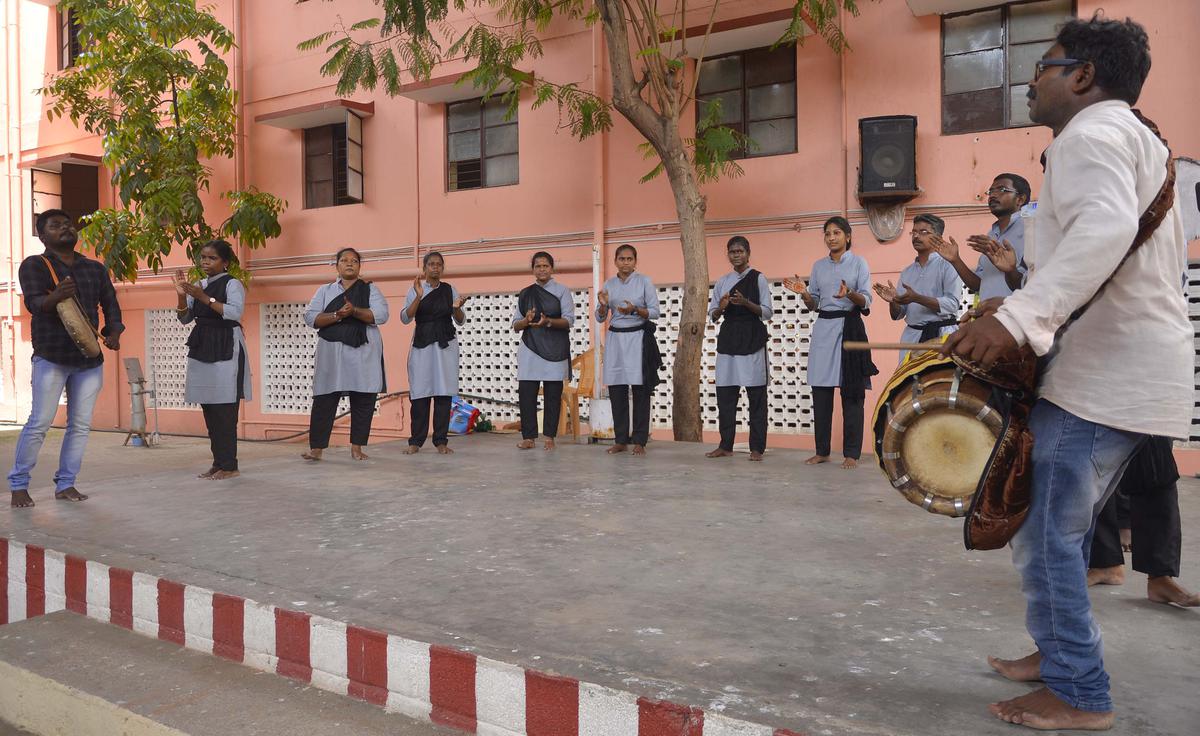
Artists performing at the Dress Rehearsal of the COVID Awareness Street Theatre Program held at Sankara Vidyalaya School on ECR in Puducherry. | Photo Credit: KUMAR SS
Badal Sircar, the noted playwright, described street theatre as “the essential tool of the trade is the human body. The potential of the human body, the ability to throw one’s voice so that 4000 people can be reached without the aid of a mike, must be explored.”
If mime is the medium, no makeup is used. Then, to emphasise expressions, the face is painted white and the eyes are painted an intense black. The actors don’t have any distinctive clothing. The theme may determine whether or not they are all dressed in black kurtas. Through the use of songs, short scripts, humour and proper vocal modulation, they can draw in pedestrians with ease.
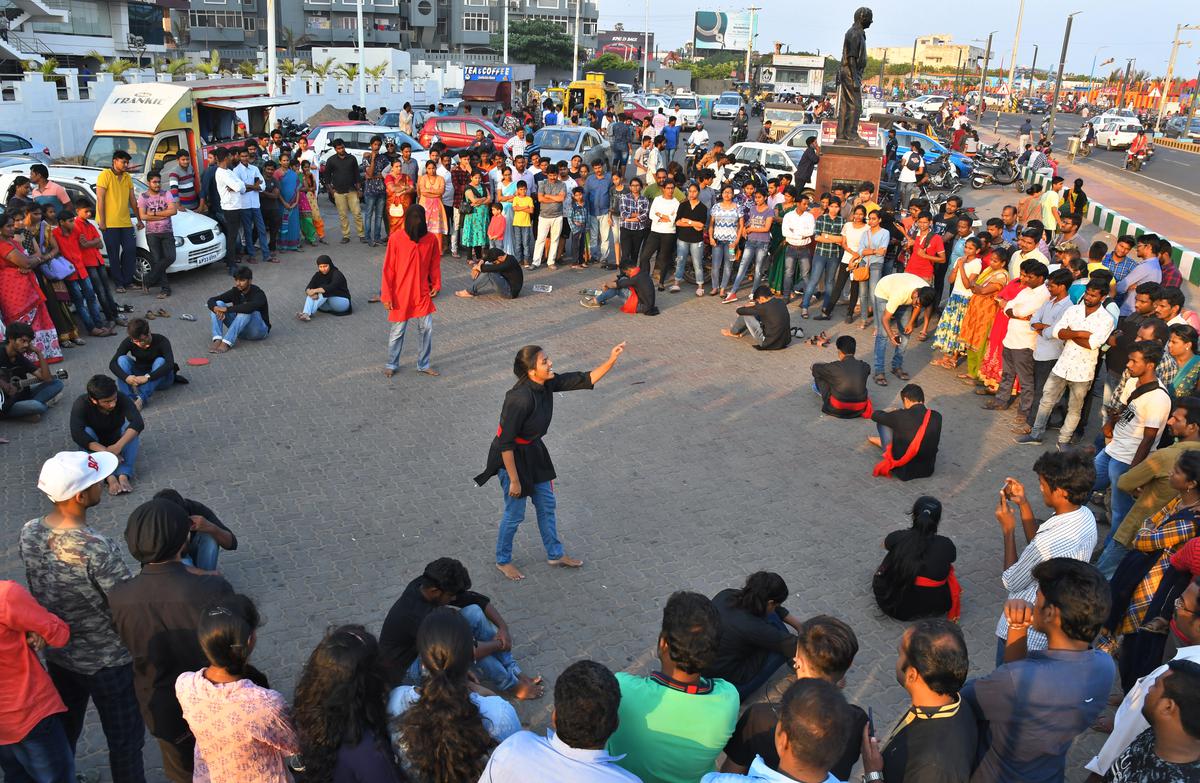
Members of Faces, theatre group of GITAM University, enacting a street play ‘Shame’, a body shaming, at the Beach Road, in Visakhapatnam. | Photo Credit: KR DEEPAK
Street theatre which combines entertainment and education, provides an engaging platform for people of all ages to connect emotionally with the issues at hand. With lively performances, relatable characters, and thought-provoking scripts, they effortlessly connect with people from all walks of life.
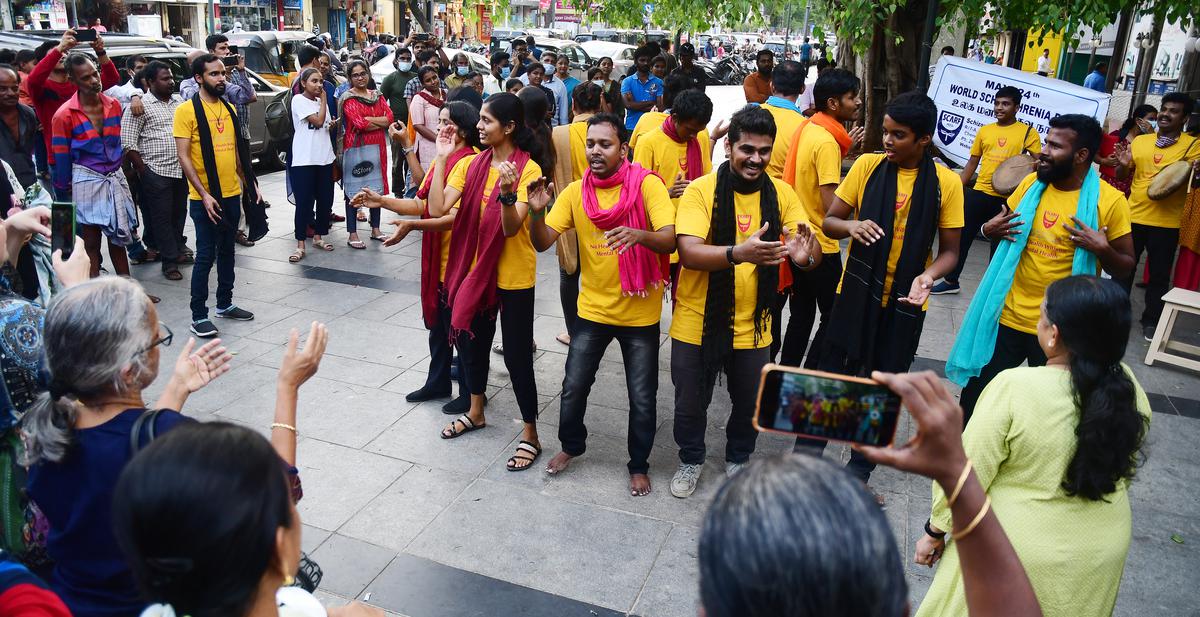
Street theatre performance on Schizophrenia awareness at Pondy Bazaar. | Photo Credit: PICHUMANI K
“I regard the theatre as the greatest of all art forms, the most immediate way in which a human being can share with another the sense of what it is to be a human being.”Oscar Wilde
Street theatre across the nation
Street theatre has its origins in ancient India, a country where dramatic performances and storytelling were an essential component of the religious and cultural fabric. While street theatre and indigenous folk theatre in India are closely related, street theatre is not primarily meant for public entertainment. Its flexibility is what sets street theatre apart from other forms of performance.
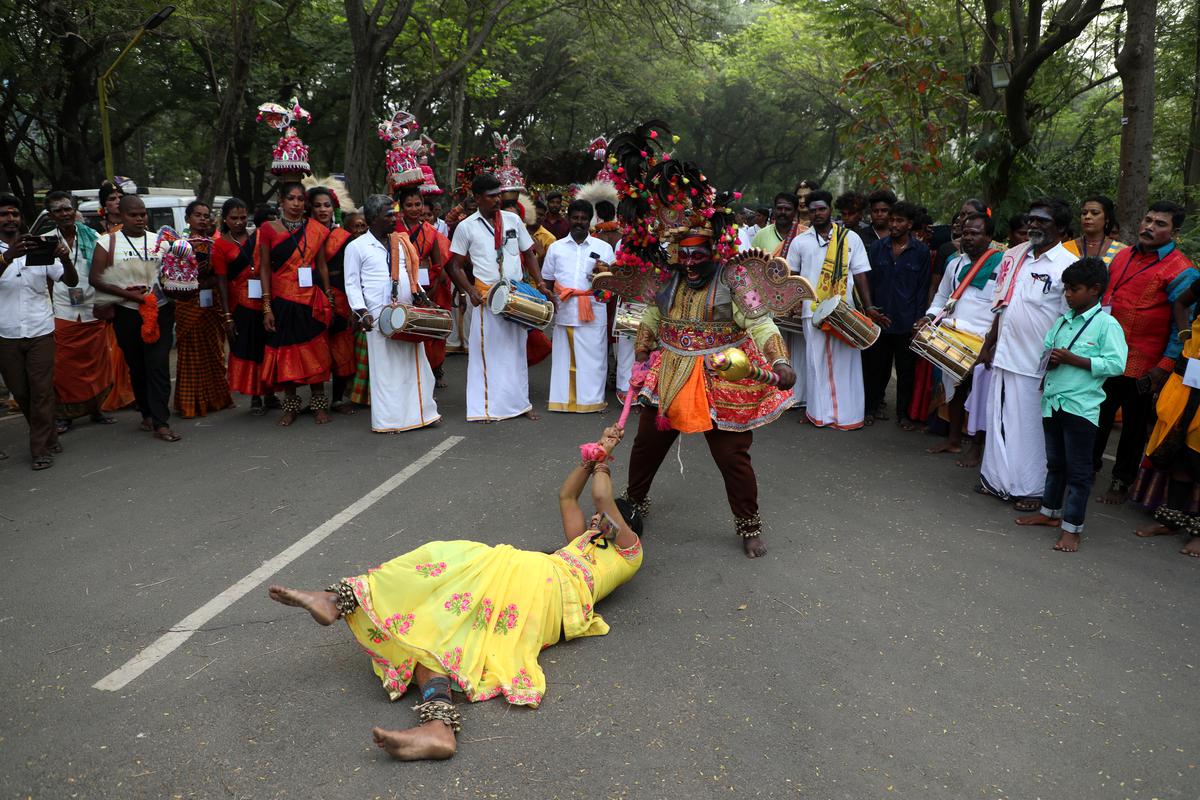
Therukoothu artists dancing in the procession during the 11th edition of ‘Veethi Virudhu Vizha’ a folk festival at Loyola College, Nungambakkam in Chennai on Thursday. | Photo Credit: Akhila Easwaran
Different parts of the country had their versions of traditional street theatre, such as the Tamasha in Maharashtra, Jatra in Bengal, Parivartan in Vadodara, Veedhinadakam in Andhra Pradesh and Terukkuttu in Tamil Nadu. All these folk theatres focussed on mythology, episodes from Indian epics, and Puranas. Science and literacy have been promoted through street plays by the Kerala Shastra Sahitya Parishad (KSSP). Chandrashekhar Patil, a Kannada dramatist, employed street theatre in Samudaya, founded in 1975, and its numerous units throughout Karnataka to parody human follies and social problems.
Theatre artist performing street play on the occasion World Theatre Day at Cubbon Park in Bengaluru on 27 March 2019. | Photo Credit: SUDHAKARA JAIN / THE HINDU
In India, street plays have been instrumental in uplifting popular sentiment, increasing consciousness, and enacting constructive social transformation. Additionally, it has provided a stage for aspiring performers and artists to display their abilities and enhance the nation’s cultural scene. Despite competition from electronic media, street theatre has not only remained popular as a popular public medium but has also spread from remote villages to large cities. This journey, which began many years ago with Safdar Hashmi’s dreams, has taken on a suitable shape and is proudly defining Indian street theatre.



